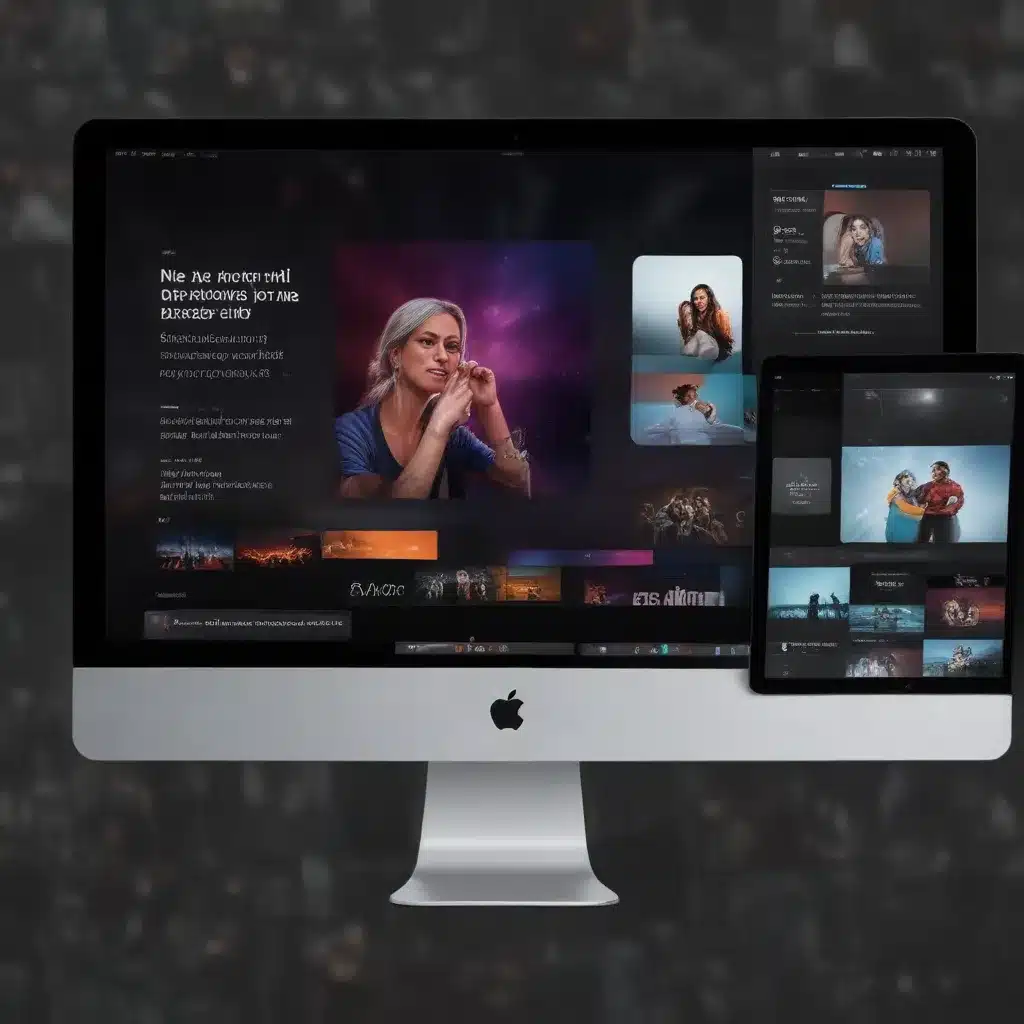
As an experienced IT professional, I’ve seen my fair share of presentations – some that captivate the audience and others that simply fall flat. When it comes to crafting visually stunning and impactful presentations, one tool stands out among the rest: Apple’s Keynote.
Visual Optimization
Keynote’s sleek design templates and robust animation tools make it a powerhouse for creating presentations that truly engage your audience. From vibrant color schemes to elegant typography, the software offers an array of customization options to elevate your content.
Slide Design
Begin by selecting a Keynote template that aligns with your brand or the overall theme of your presentation. Utilize the built-in design tools to fine-tune the layout, balance the elements, and ensure a cohesive visual flow throughout your slides. Experiment with different slide transitions and object animations to add dynamism and smoothness to your transitions.
Color Schemes
Keynote’s color palette options allow you to establish a visually striking and consistent color scheme that reinforces your message. Leverage complementary hues and strategic use of contrast to draw the audience’s attention to the most important information. Remember, the colors you choose can evoke specific emotions and set the tone for your entire presentation.
Typography
Keynote’s typography features are a game-changer. Carefully select fonts that are legible, professional, and align with your brand. Experiment with font sizes, weights, and styles to create visual hierarchy and emphasize key points. Ensure that your text is easily readable, even for audience members seated further away.
Multimedia Integration
Seamlessly incorporate multimedia elements like images, videos, and charts to enhance your message and captivate your audience. Keynote’s intuitive media management tools make it easy to align these elements with your overall design and leverage them to support your narrative.
Impactful Delivery
Crafting a visually stunning presentation is only half the battle. Equally important is how you deliver your content and engage your audience.
Presentation Structure
Develop a clear and logical presentation structure that guides your audience through the key points. Organize your slides in a way that builds momentum and leads to a compelling conclusion. Incorporate storytelling techniques to create an emotional connection and make your message more memorable.
Audience Engagement
Maintain eye contact with your audience and use gestures to emphasize important points. Encourage questions and interactions throughout the presentation to foster a dynamic and engaging experience. Adapt your pace and tone to keep your audience captivated and responsive.
Storytelling Techniques
Leverage Keynote’s animation and transition features to weave a compelling narrative that resonates with your audience. Incorporate personal anecdotes, analogies, and real-world examples to make complex topics more relatable. Use rhetorical devices like repetition, rhetorical questions, and occasional self-corrections to create a more conversational and impactful delivery.
IT-Centric Considerations
As an IT professional, you understand the importance of hardware requirements, software compatibility, and data visualization when it comes to delivering effective presentations.
Hardware Requirements
Ensure that your device and presentation setup are optimized for a seamless Keynote experience. Verify that your laptop or desktop has sufficient processing power, RAM, and graphics capabilities to handle any animations or multimedia elements** you plan to include.
Software Compatibility
While Keynote is primarily designed for the Apple ecosystem, you can export your presentations in various formats, including PDF, PowerPoint, and HTML, to ensure compatibility across different platforms and devices. Research and test your Keynote presentations on various operating systems and software versions to identify and address any potential compatibility issues.
Data Visualization
Keynote’s charting and data visualization tools allow you to create visually engaging and informative graphs, charts, and diagrams. Carefully select the most appropriate data visualization methods to effectively convey your message and support your key points**.
Presentation Best Practices
To maximize the impact of your Keynote presentations, consider the following best practices.
Rehearsal Strategies
Rehearse your presentation thoroughly to ensure a confident and polished delivery. Practice your timing, test your transitions, and familiarize yourself with the flow of your presentation. Solicit feedback from colleagues or trusted advisors to identify areas for improvement.
Accessibility Guidelines
Incorporate accessibility features to ensure your presentation is inclusive and caters to all audience members, including those with visual or hearing impairments. Provide alt text for images, use high-contrast color schemes, and consider adding closed captions or transcripts for any video or audio content.
Feedback Incorporation
Actively seek feedback from your audience and use it to refine your future presentations. Encourage questions and comments during and after your presentation, and take note of any areas that may have been unclear or could be improved.
Keynote Workflow Efficiency
To streamline your Keynote presentation workflow, consider the following strategies.
Template Management
Develop a library of reusable Keynote templates that align with your branding and can be easily customized for different projects or events. Leverage Keynote’s built-in theme features to quickly apply consistent styling across multiple presentations.
Collaborative Editing
Keynote’s real-time collaboration capabilities allow multiple team members to work on a presentation simultaneously. Leverage this feature to enhance productivity and encourage input from various stakeholders.
Version Control
Maintain a robust version control system for your Keynote presentations to track changes, revert to previous iterations, and ensure that you’re always working with the most up-to-date version.
Emerging Presentation Technologies
As technology continues to evolve, new and exciting presentation tools are emerging that can further enhance the impact of your Keynote presentations.
Virtual/Augmented Reality
Explore the integration of virtual and augmented reality elements into your Keynote presentations to create immersive, interactive experiences for your audience. Leverage these technologies to bring your data and concepts to life in a captivating and memorable way.
Interactive Displays
Incorporate interactive display technologies into your presentation setup to foster increased audience engagement. Utilize touchscreen capabilities, gesture-based controls, and real-time data visualization to create a dynamic and engaging presentation experience.
Voice-Driven Presentations
Experiment with voice-driven presentation features, such as voice-controlled slide navigation and voice-activated annotations, to streamline your delivery and allow you to focus on engaging your audience.
By leveraging the power of Keynote and adopting best practices for visual optimization, impactful delivery, and workflow efficiency, you can create presentations that captivate your audience and leave a lasting impression. As the IT landscape continues to evolve, staying up-to-date with emerging presentation technologies will further enhance your ability to deliver visually stunning and impactful presentations.
Remember, the key to successful presentations is not just the technology, but the careful planning, creativity, and engagement you bring to the table. With Keynote as your powerful ally, you can elevate your presentations to new heights and captivate your audience like never before.
For more IT-related tips and insights, be sure to visit IT Fix. Our team of experts is always here to help you navigate the ever-changing world of technology.












